i bc27f85be50b71b1 (233 page)
Read i bc27f85be50b71b1 Online
Authors: Unknown

I-A
Medical Record Review
Michele P. West
The medical record, whether paper or electronic, is a legal doCllment that chronicles a patient's clinical course during hospitalization and is the primary means of communication between the various clinicians caring for a single patient. More specifically, the
medical record contains information about past or present symptOms and disease(s), test and examination results, interventions, and medical-surgical outcome,' The medical record should be kept
confidential, and all health care providers should safeguard the
availability and integrity of health care information in oral, written, or electronic forms.2 Specific topics, such as human immunodeficiency virus status, substance abuse, domestic abuse, or psychiatric history, are privileged information and discussion of
them is subject to ethical and regulatory guidelines,) The physical
therapist should comply with the American Physical Therapy Association's Guide for Professiol1al COl/duct' and any policies and procedures of the facility or state in regard to sharing medical record information with the patient, family, visitors, or third parries.
745

746
ACUTE CARE HANDBOOK FOR PHYSICAL THERAPISTS
The organization of the medical record can vary from institution to
institution; however, the medical record is typically composed of the
following basic sections:
Orders
The order section is a log of all instructions of the plan of care for the
patient, including medications, diagnostic or therapeutic tests and
procedures, vital sign parameters, activity level, diet, the need for consui ration services, and resuscitation status. Orders may be written by a physician, physician assistant, or nurse practitioner. A verbal or telephone order may be taken by a nurse or other health care provider, including a physical therapist, according to departmental, facility, and
state policies. All orders should be dated, timed, and signed or
cosigned by the appropriate personnel.
History
The history portion of the record includes an admission note and
progress nOtes (a shortened version of the initial note, with emphasis on
the physical findings, assessment, and plan), a nursing admission assessment and problem list, consult service notes from physicians and allied health professionals, and operative and procedural notes. Medication
sheets, now sheets, and clinical pathways are also included in this section.
Reports
A variety of reports are filed chronologically in individual sections in
the medical record (e.g., radiologic or laboratory reports). Each
report includes an interpretation or normal reference ranges, or both,
for various diagnostic or laboratory test results.
Admission Note Format
The following outline summarizes the basic format of the admission
(initial) note written by a physician, physician assistant, or nurse
practitioner in the medical record.5.6 The italicized items indicate the

AI'PENDIX I-A: MEDICAL RECORD REVIEW
747
standard information the physical therapist should review before
beginning an intervention.
I.
History (subjective information)
A.
Data that identify the patient, including the source
and degree of reliability of the information.
B.
History o( present iIlltess (HPI), including the chief
complaint and a chronologie list of the problems associated with the chief complaint.
C.
Medical or sllrgical history, risk (actors for disease,
and allergies.
D.
Family health history, including age and health or
age and cause of death for immediate family members as
well as a relevant familial medical history.
E.
Personal and social history, including occupation,
li(estyle, (1Iltctiollal mobility statlls, the need (or home or
outpatient services, and architectural barriers at home.
F.
Current medicatiolls, including level of compliance.
II.
The physical examination (objective information). Nega-
tive (normal) or positive (abnormal) findings are described in detail
according to the following outline:
A.
General information, including vital signs, labora-
tory findillgs, mental status, and appearance.
B.
Head, eyes, ears, /lose, throat, (HEENT) and neck
C.
Chest
D.
Heart (Cor)
E.
Abdomen
F.
Extremities
C.
Neurologic system
III.
Assessment. The assessment is a statement of the condition
and prognosis of the patient in regard to the chief complaint and
medical-surgical status. If the etiology of the problem(s) is unclear,
then differential diagnoses are listed.

748
ACUTE CARE HANDBOOK FOR PHYSICAL THERAPISTS
IV.
Plan. The plan of care includes further observation, tests,
laboratory analysis, consultation with additional specialry services
or providers, pharmacologic therapies, other interventions, and
discharge planning.
References
I. Wood DL. Documentation guidelines: evolution, future direction, and
compliance. Am J Med 2000; II 0,332-334.
2. Ziel SE. Federal regulations governing health information securiry published. AORN J 1998;68,866-867.
3. Rutberg MP. Medical records confidentiality. In MI Weintraub (ed).
Neurologic Clinics: Medical-Legal Issues Facing Neurologists. Neurol
Clin 1999; I n07-313.
4. American Physical Therapy Association. Guidc for Profcssional Conduct and Code of Ethics. Guide to Physical Therapy Practice. Phys Ther 2001;81,5689.
5. SwartZ MH. The Clinical Record. In MH Swam, Textbook of Physical
Diagnosis: History and Examination. Philadelphia: W.B. Saunders,
1998;681-686.
6. Naumburg EH. Interviewing and the Health History. Philadelphia: Lippincott, 1999;35-39.


I-B
Acute Care Setting
Michele P. West
Introduction
The physical therapist must have an appreCIation for the distinct
aspects of in-patient acute care. The purpose of this appendix is to
briefly present information about the acute care environment, including safety and the use of physical restraints, the effects of prolonged bed rest, end-of-life issues, and some of the unique circumstances,
conditions, or patient responses encountered in the hospital setting.
The acute care or hospital setting is a unique environment with protocols and standards of practice and safety that may not be applicable to other areas of health care delivery, such as an outpatient clinic or
school system. Hospitals are designed to accommodate a wide variety
of routine, urgent, or emergent patient care needs. The staff and medical-surgical equipment (see Appendices lII-A, -B, and -C) reAect these needs. The nature of the hospital setting is to provide 24-hour care;
thus, the patient, family, and caregivers are faced with the physical,
psychological, and emotional sequelae of illness and hospitalization.
This can include the response(s) to a change in daily routine; a lack of
privacy and independence; or perhaps a response to a potential lifesryle change, medical crisis, critical illness, or long-term illness.
749

750
AClJrE CARE HANDBOOK FOR PHYSICAL THERAPI�S
Safe Caregiver and Patient Environment